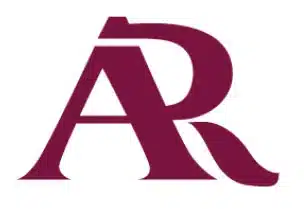Heroin and Opioid Addiction

Heroin and Opioid Addiction
The 12-step program is the most commonly known addiction treatment method. This model for overcoming addiction has effectively helped treat the disease of addiction for over 70 years.
In 2017, over 72,000 people died of a drug overdose in the United States. Of these drug fatalities, nearly 50,000 were caused by opioids. While nearly 30,000 people died from using the incredibly potent synthetic opioid fentanyl, over 15,000 fatalities were caused by heroin, which is one of the most easily accessible and prevalent types of opioids in use in America today. Most strikingly, the number of overdose deaths related to heroin has skyrocketed from just over 2,000 in 2002 to over 13,000 in 2016, which is a 533 percent increase. Ohio, in particular, has been hit hard by the opioid crisis; it has one of the highest death rates linked to opioid overdoses in the country.
Whether you call it a crisis or an epidemic, it’s clear that this upward trend in opioid deaths in the United States is a serious problem that is crippling our youth and decimating our country’s families. Opioid addiction is such an issue in America that it is lowering the overall life expectancy, and dangerous Chinese synthetics like fentanyl are only the tip of the iceberg when it comes to grappling with the threat that these drugs pose to the health of our society.
What Are Opioids?
An opioid is any type of drug that mimics the effects of opium, which has been used for hundreds of years as an analgesic and a recreational drug. The first opioid compound to be isolated was morphine, and this drug was quickly followed by oxycodone, which is the drug that’s contained in pharmaceutical products like OxyContin and Percocet.
Opioids block the pain receptors in the brain, which makes them powerful tools for helping patients recover from injuries, surgery, or serious diseases. However, the powerful euphoric effect imparted by these drugs causes some users to start valuing the opioid high more than anything else.
People who abuse opioids become detached from reality, and they may lose track of time. Ingesting high doses of opioids makes communication difficult, and opioid users may have serious trouble fulfilling responsibilities such as caring for children or for themselves. Finding a high-functioning opioid user is extremely rare; opioid addiction is usually characterized by a downward spiral that results in overdoses in many cases.
What Is Heroin?
Heroin is a derivative of morphine. It is one of the most commonly used opioids, and it is usually sold as a powder. It has been illegal in the United States for decades.
Since heroin is manufactured by drug cartels instead of pharmaceutical companies, it is usually cut with other substances that reduce its quality. For instance, heroin is frequently mixed with powdered milk or sugar, and “black tar” heroin is filled with impurities that cause it to take on a sticky or rock-like consistency.
Victims of heroin addiction usually progress rapidly from snorting or smoking the drug to injecting it intravenously. Many new users avoid the needle at first, but they soon learn that the high associated with injection is much more intense, and they may end up making mistakes such as sharing a needle with someone who is HIV-positive.
In most cases, people who become crippled by heroin addiction have used opioids before. According to the Journal of the American Medical Association (JAMA), 75 percent of people who end up using heroin started off with prescription drugs.
Many people who switch to heroin do so because it is less expensive than prescription drugs. However, heroin is usually lower in quality than prescription opioids, and it may also be spiked with much more deadly drugs like fentanyl. Heroin users who buy a bag of drugs off the street have no idea what their heroin contains, and many users who buy heroin laced with fentanyl can overdose from their first hit.
What Is the Detoxification Process for Opioids and Heroin?
It’s undeniable that heroin and opioids are among the most dangerous drugs in the world. In particular, fentanyl, which is predominantly manufactured in China and smuggled over the southern border by Mexican drug gangs, could easily be classified as one of the most dangerous drugs ever made. Becoming addicted to opioids isn’t an automatic death sentence, though; in fact, many opioid addicts go through the recovery process and live to tell the tale. Recovering from opioid abuse isn’t easy, however.
Opioids are hard to quit even when you’re using them within the limits of a prescription given by your doctor, but clearing your system of these harmful compounds only becomes harder if you’ve been abusing prescription drugs or using illicit forms of opioids. Here are some of the withdrawal symptoms that you might experience within the first 12 hours of your last dose of opioids:
- Nausea
- Vomiting
- Stomach pain
- Diarrhea
- Increased sensitivity to light and odors
- Lightheadedness and dissociation
- Insomnia
- Full-body muscle aches
- Piloerection (goosebumps)
- Sweating
- Dehydration
- Mania/hysteria
- Suicidal or violent thoughts
Opioid withdrawal certainly isn’t a process that you want to go through alone. A person who is withdrawing from opioids needs constant and conscientious care as they could become too weak to move or care for themselves. While withdrawal is sometimes a process that can be done from home under the right circumstances, it is usually safer to detoxify from opioids in a professional setting.
Inpatient Treatment Programs
Users who decide to enroll in inpatient treatment programs, such as Arrow Passage Recovery, receive benefits above and beyond help with the withdrawal process. Once the drugs have been processed out of your system, our inpatient treatment staff is able to help you cope with the consequences and origins of your addiction. These programs can be tailored to fit a particular person’s needs and experience, and they are ideal solutions for people who are addicted to more than one substance or have deep psychological issues that cause them to be more prone to addiction.
Types of Therapy
Once a client has arrived to Arrow Passage Recovery from Detox, they will begin the therapy process. There are different types of therapy that may be used in an inpatient treatment setting, and they include:
1. Individual Counseling
In this type of therapy, a recovering addict sits down with a counselor one-on-one. The goal of individual counseling is for users to develop trusting relationships with counselors, and counselors then assist the users in setting goals for recovery. In an individual counseling session, therapists may also help users deal with some of the underlying issues that may have spurred their addiction.
2. Group Therapy
While individual counseling sessions provide an in-depth format for exploring deep-seated issues, group therapy is an equally important part of the inpatient recovery process. In most group therapy sessions, recovering addicts sit in a circle, and a single addiction professional guides the group through a process of sharing and processing.
Most recovering addicts share similar goals and dreams, and while they may have significant personal differences, group therapy sessions provide opportunities for recovering addicts to pantomime the process of interfacing with society at large. Once users leave the sheltering environment of the recovery clinic, they will need to interface with people who don’t understand their experiences; group therapy provides people in recovery with opportunities to keep their social skills fresh as they embark on a new path in life.
3. Cognitive-Behavioral Therapy (CBT)
CBT is a type of psychotherapy that challenges patients to go deep and alter basic assumptions that have distorted their way of thinking. While CBT doesn’t lay blame on users, it does challenge people in recovery to understand their emotions so that they can make better decisions in the future. Cognitive behavioral therapists understand that unresolved emotions are the major driving forces behind addictive behaviors, and they use proven psychological tools to help recovering addicts achieve emotional catharsis.
4. Dialectical Behavioral Therapy (DBT)
DBT is a variant of cognitive behavioral therapy that was first developed by Marsha Linehan in the 1980s to treat borderline personality disorder. This type of psychotherapy challenges recovering addicts to hold opposing thoughts in their mind at once without siding with either thought. As pioneering psychologists Sigmund Freud and Carl Jung noted, the mind is built off opposing archetypes, and an imbalance between the conscious and “shadow” impulses often leads to dangerous behavior. DBT therapists seek to help recovering addicts regain balance, and this type of therapy is often used in conjunction with CBT.
5. Pharmaceutical Treatment
In certain circumstances, we may also make use of medication to help users recover. Pharmaceutical treatment is usually only used as a last resort due to the nature of addiction. However, some users find that their cravings for opioids are so intense that they are tempted to relapse. Rather than let their patients relapse on heroin, fentanyl, or other dangerous street drugs, we may prescribe their patients specially formulated opioid analogs that are used to help beat cravings.
The two types of drugs that are most commonly used in pharmaceutical addiction treatment are buprenorphine — which is sold under the brand names Suboxone and Subutex — and Vivitrol. Drugs like Suboxone are very similar to opioids in composition, but they have special additives that help users recover. Vivitrol directly blocks the potential of opioids to cause euphoric effects, which can make these drugs seem less desirable.
6. Other Treatment Methods
Alternative treatment methods for opioid addiction have also been found useful. Activities that train your body like yoga and tai chi have helped some users recover effectively, and some inpatient clinics also teach stress management techniques that can help take the edge away from difficult life situations that might trigger relapse. In addition, innovative therapies like adventure therapy — which consists of going out in nature — may also be suggested.
Continued Recovery
Even after you’ve completed your inpatient treatment, there’s still a lot of work to do. Our addiction specialists have recognized that recovering from addiction is a process that never ends, and if you’ve ever been a drug user, you will be in recovery for the rest of your life. Couching your addiction in this context helps you to be careful when making choices that may cause a relapse, and it also provides you with the opportunity to feel like you are part of a loving and welcoming community for the rest of your life.
In many cases, returning to the environment in which you suffered from your addiction can cause bad habits to resume, and for this reason, it might make sense to start living with other people who are recovering from addiction. As you become acclimated to the outside world, there may come a time when you will want to return to the home from which you came, but sober living homes can provide a necessary buffer for those who aren’t quite ready to return to their normal routines.
Arrow Passage Recovery offers continued treatment after their inpatient program has been completed. We have even created groups that recovering addicts can join once they complete treatment, and these groups meet in places outside of the treatment center to engage in recreational activities and group therapy meetings that help keep recovering addicts’ commitment to sobriety fresh.
While you might leave treatment sure in the knowledge that you’ll never use opioids again, life in the outside world can provide challenges that you won’t encounter while you’re ensconced in the safety of a clinic. It’s important that you provide yourself with support systems that will help you cope with living in the same world that once proved to be such a source of difficulty. With the help of Arrow Passage Recovery, you can gird yourself with the tools and resolve necessary to take on the task of viewing life through the clear lens of sobriety.















